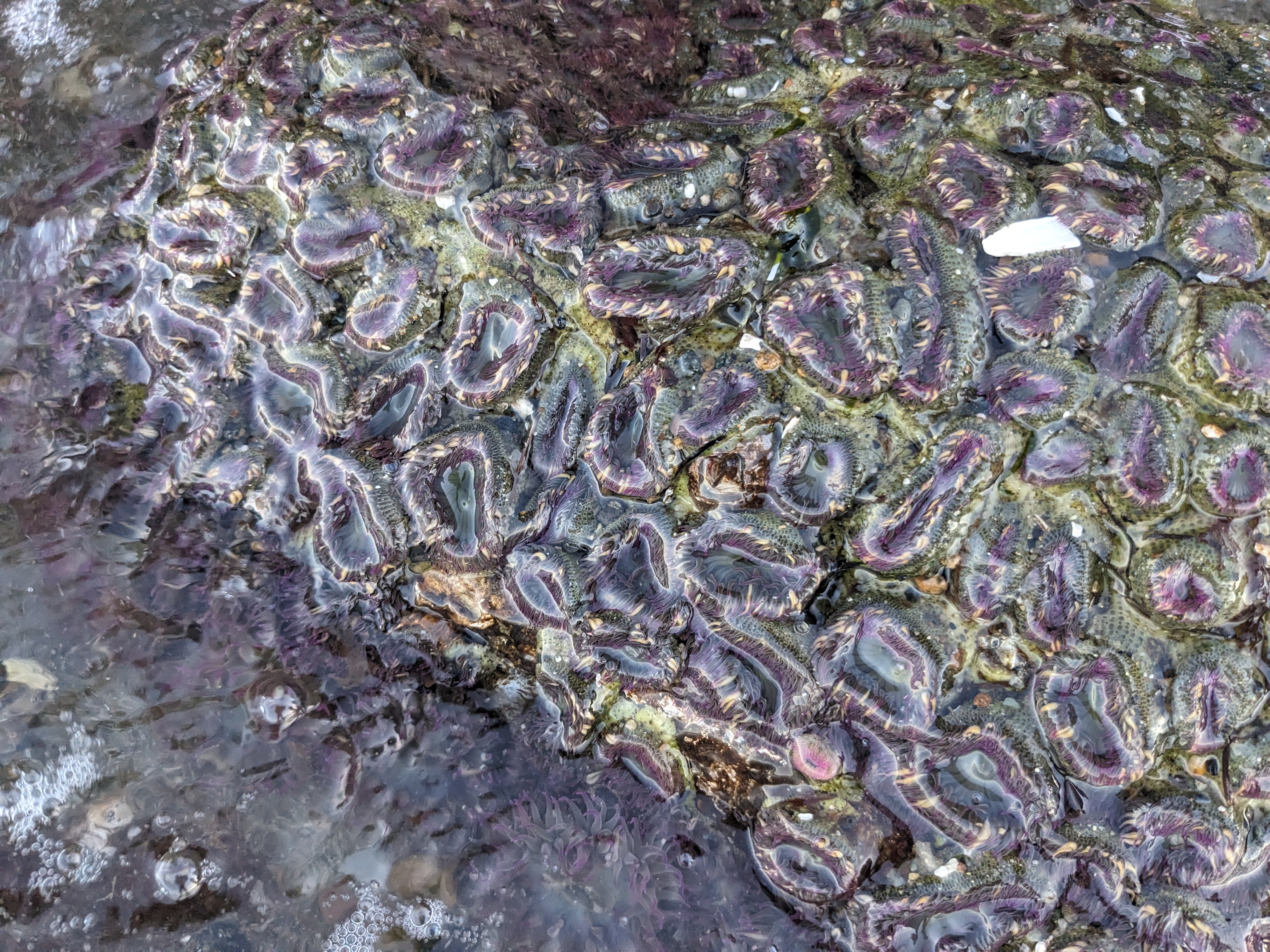## install packages
if (!require("tidyverse", character.only = TRUE)) { install.packages("tidyverse")}
if (!require("kableExtra", character.only = TRUE)) { install.packages("kableExtra")}
if (!require("leaflet", character.only = TRUE)){ install.packages("leaflet")}On Monday, March 18th, 2024 we collected Anthopleura elegantissima from Owen’s Beach at Point Defiance Park in Tacoma, Washington under WDFW scientific collection permit Tanja 24-010. It was a beautiful day, and the ‘Mountain was out’, gowned in snowy white against a blue sky; not a single cloud. It was the kind of spring day that makes people of the 47th latitude giddy. The collections encompassed the low tide, between 18:27 and 19:40, corresponding to a +1ft MLLW to +0.9ft MLLW tide height (determined by nearest tide station, 9446484) at time of collection. We collected 7 anemones from 12 distinct aggregates. The collections were done efficiently by hand using metal scoopulas1 to gently nudge under the pedal disc of an anemone, and further work under the pedal disc to loosen it from its’ substrate. Once freed, the anemones were transferred in polypropylene mesh bags labelled with their aggregate number (1-12) to a cooler with seawater. One anemone from each aggregate was immediately snap-frozen in liquid nitrogen. This was done to preserve an environmental control with which to compare any microbiome changes that may occur due to the transfer from the intertidal zone to the lab. The remaining 6 anemones from each aggregate were transferred to individual 60mm petri dishes that had been acid-washed, and labelled with lab pressure tape and sharpie. The anemones, set in their new petri-dish homes, were placed in a recirculating seawater table in the Padilla-Gamino Lab located at the University of Washington in Seattle by 22:00, just 4 hours post collection. The frozen specimens were stored in the Padilla-Gamino Lab - 80 o C freezer for later processing.
1 This method was suggested to me by Dr. Alan Verde in personal communication, and I was thrilled by how well it worked! Thank you, Verde!
The remainder of this post will provide tables and photos detailing the location of the collection sites and documenting the tremendous gift of friendship I have in those who were willing to ‘come poke anemones with me’.

## load libraries
library(tidyverse)
library(kableExtra)
library(leaflet)1 Data sheet
anemone_collection <- read_csv('18MAR24-anemone-collections.csv',
col_types = cols(
date = col_date(format = "%m/%d/%Y"),
timePST = col_time(format = "%H:%M"),
site = col_character(),
aggregate = col_factor(),
lat = col_double(),
lon = col_double()
))anemone_collection %>%
kbl() %>%
kable_paper("hover", full_width = F)| date | timePST | site | aggregate | lat | lon |
|---|---|---|---|---|---|
| 2024-03-30 | 15:01:00 | Alki | 1 | 47.57214 | -122.4137 |
| 2024-03-30 | 15:04:00 | Alki | 2 | 47.57199 | -122.4139 |
| 2024-03-30 | 15:22:00 | Alki | 3 | 47.57148 | -122.4131 |
| 2024-03-30 | 15:31:00 | Alki | 4 | 47.57160 | -122.4131 |
2 Collection map
# Prepare the text for the tooltip:
mytext <- paste(
"Aggregate: ", anemone_collection$aggregate, "<br/>",
"Date: ", anemone_collection$date) %>%
lapply(htmltools::HTML)
# Final Map
pdp <- leaflet(anemone_collection) %>%
addTiles() %>%
setView( lng = -122.539, lat = 47.318, zoom = 16 ) %>%
addProviderTiles("Esri.WorldImagery") %>%
addCircleMarkers(~lon, ~lat,
fillColor = "orange", fillOpacity = 0.7, color="white", radius=8, stroke=FALSE,
label = mytext,
labelOptions = labelOptions( style = list("font-weight" = "normal", padding = "3px 8px"), textsize = "13px", direction = "auto")
)
pdp3 Aggregates (in detail)
3.1 1
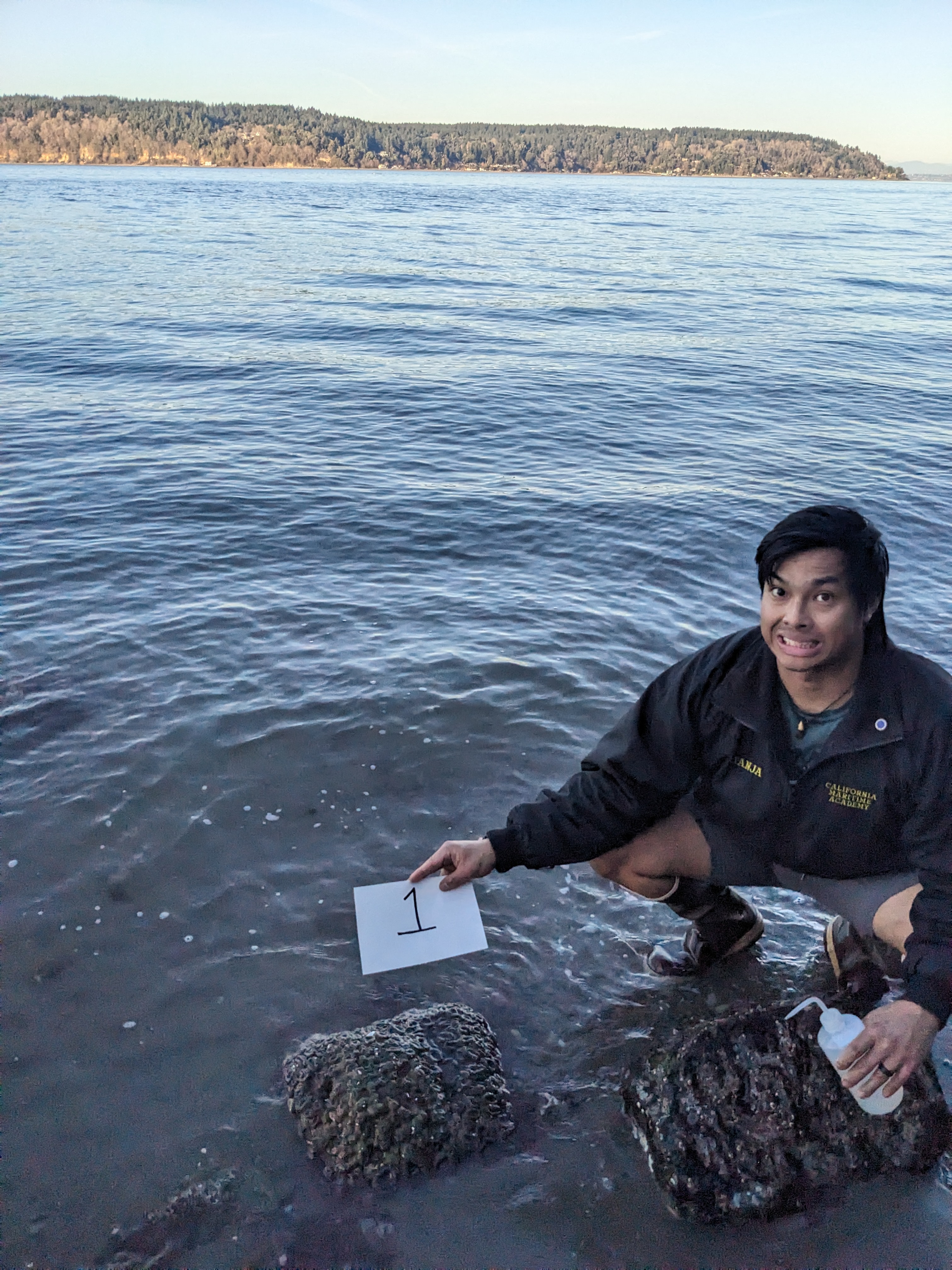
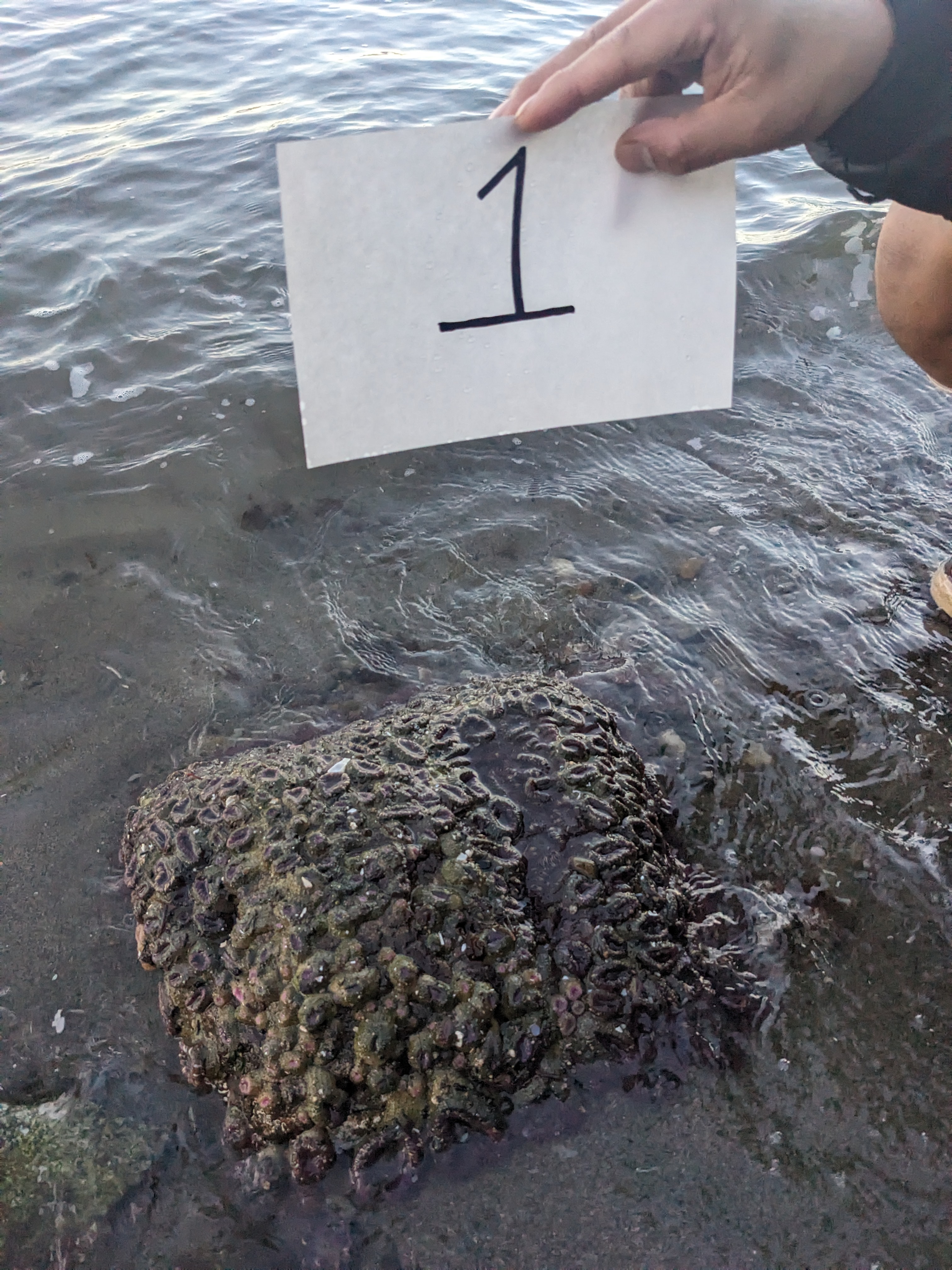
3.2 2
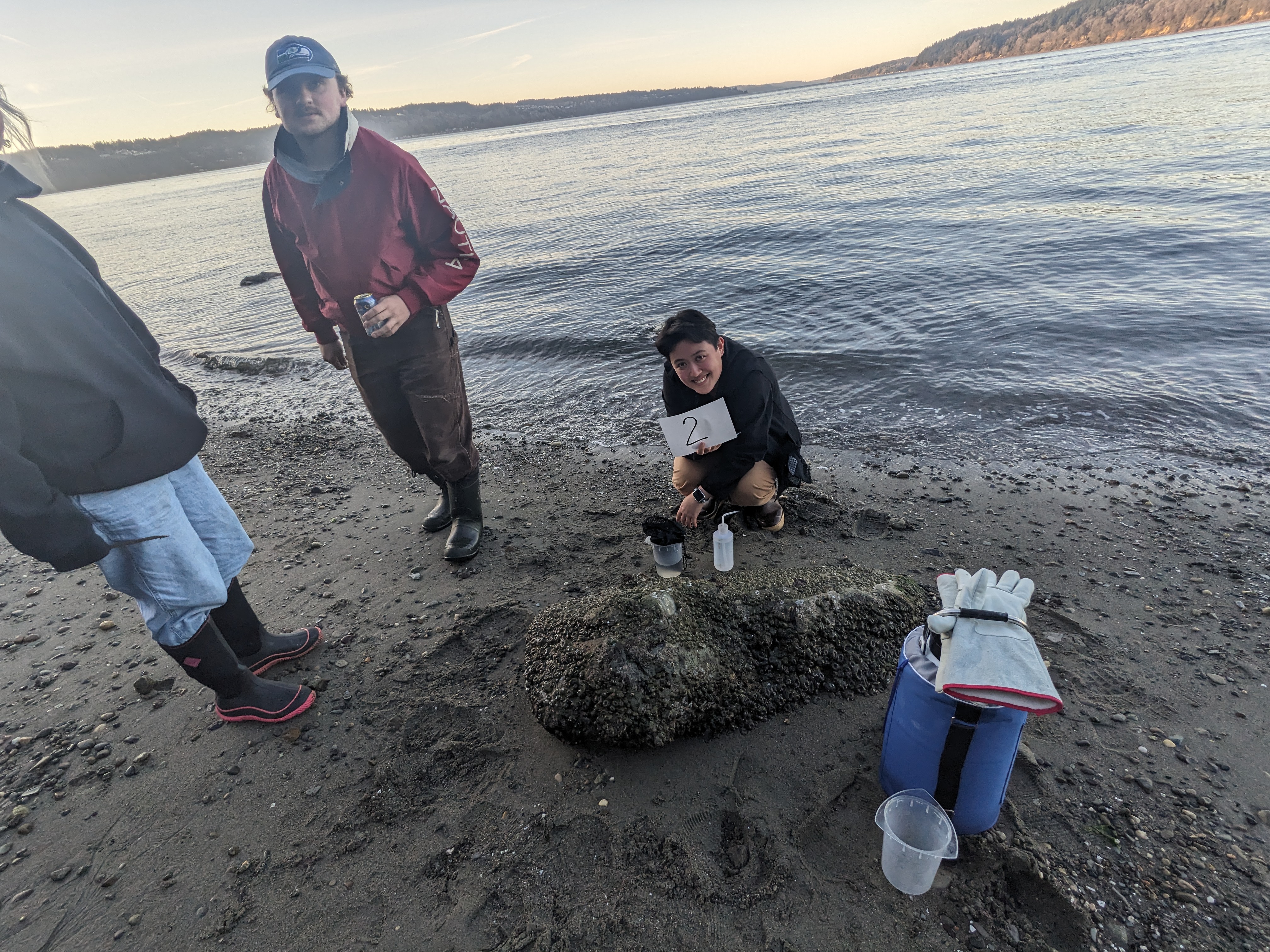
3.3 3
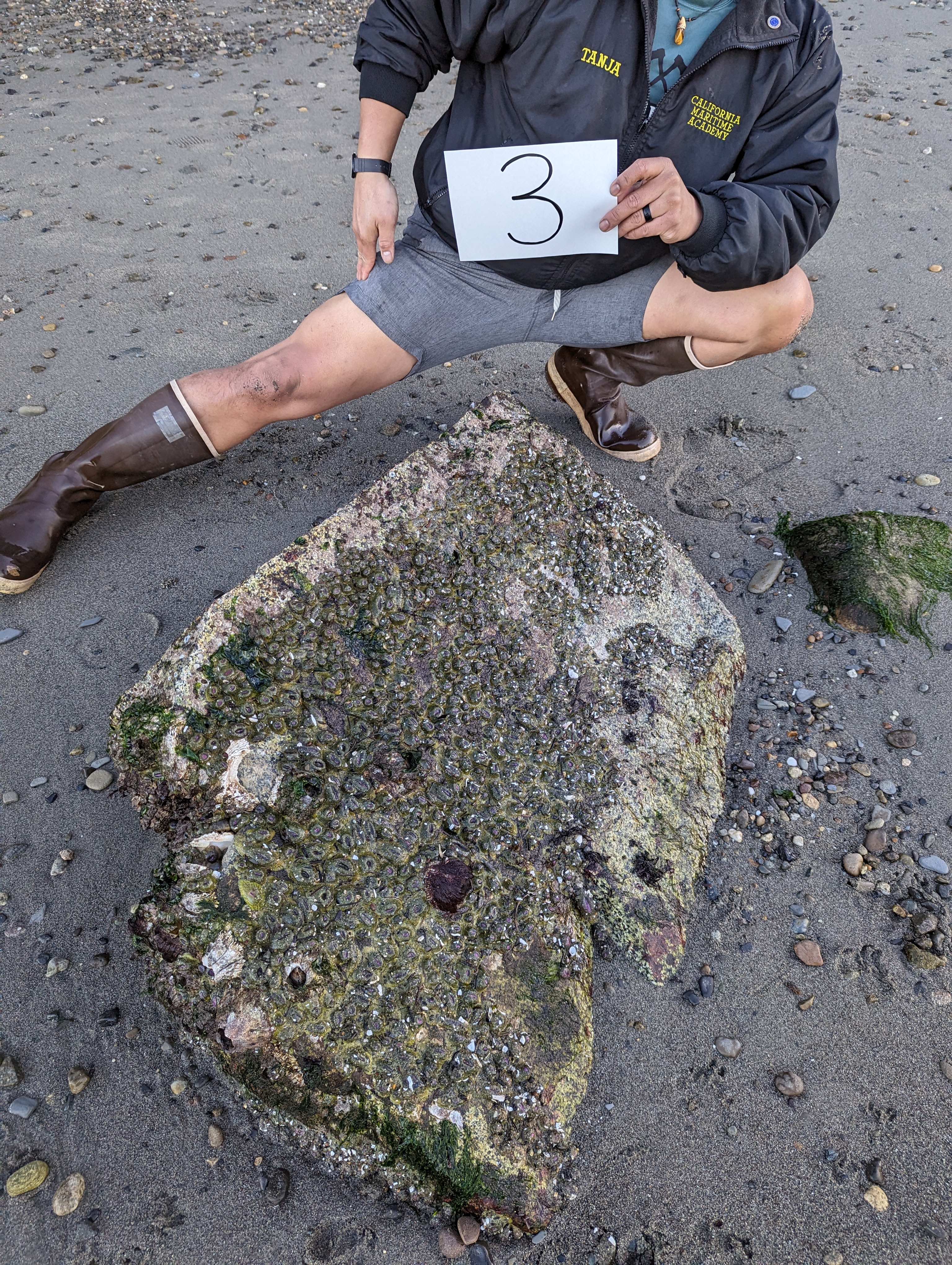
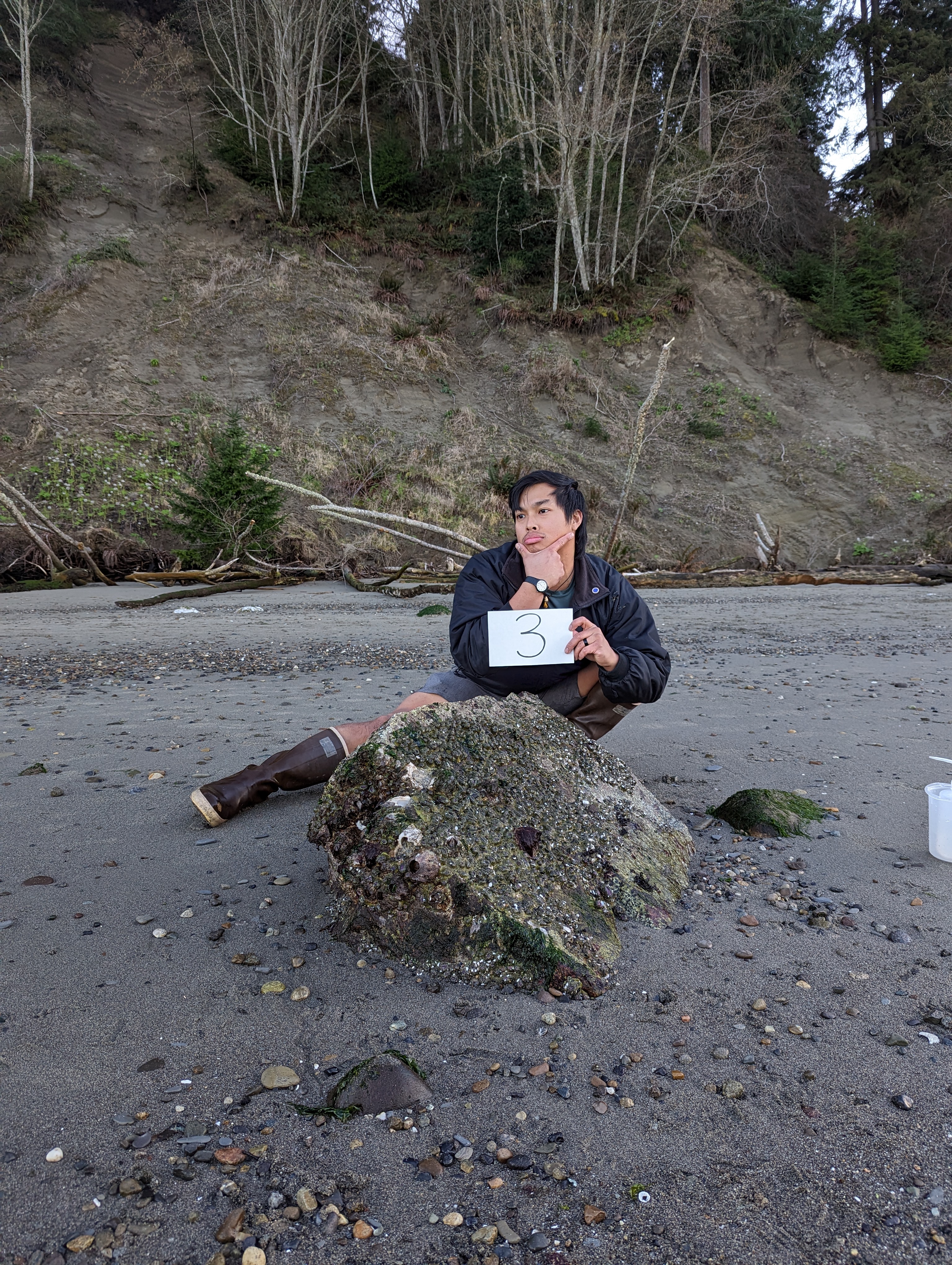
3.4 4

*need to find a better shot of aggregate no. 4…
3.5 5
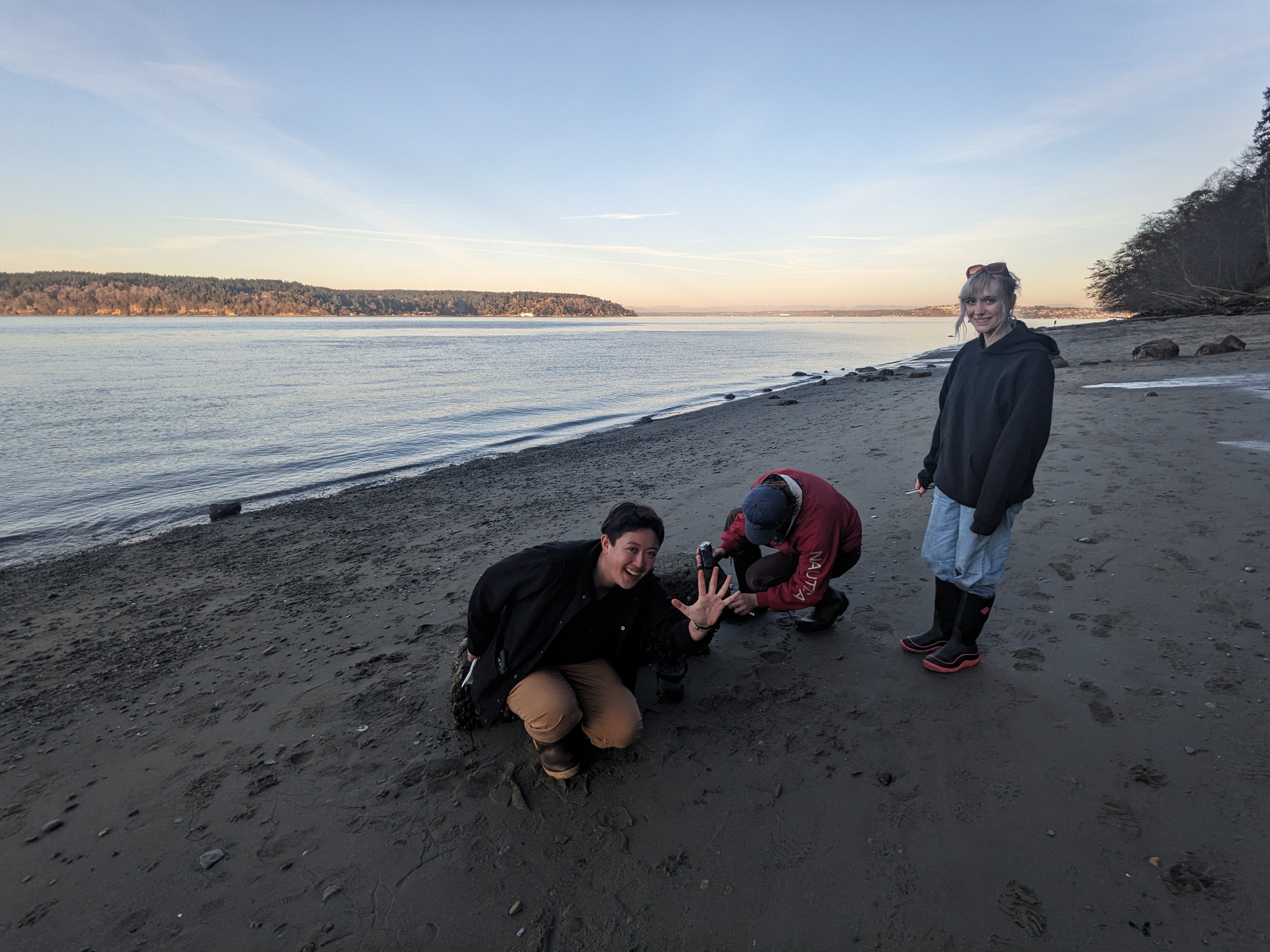
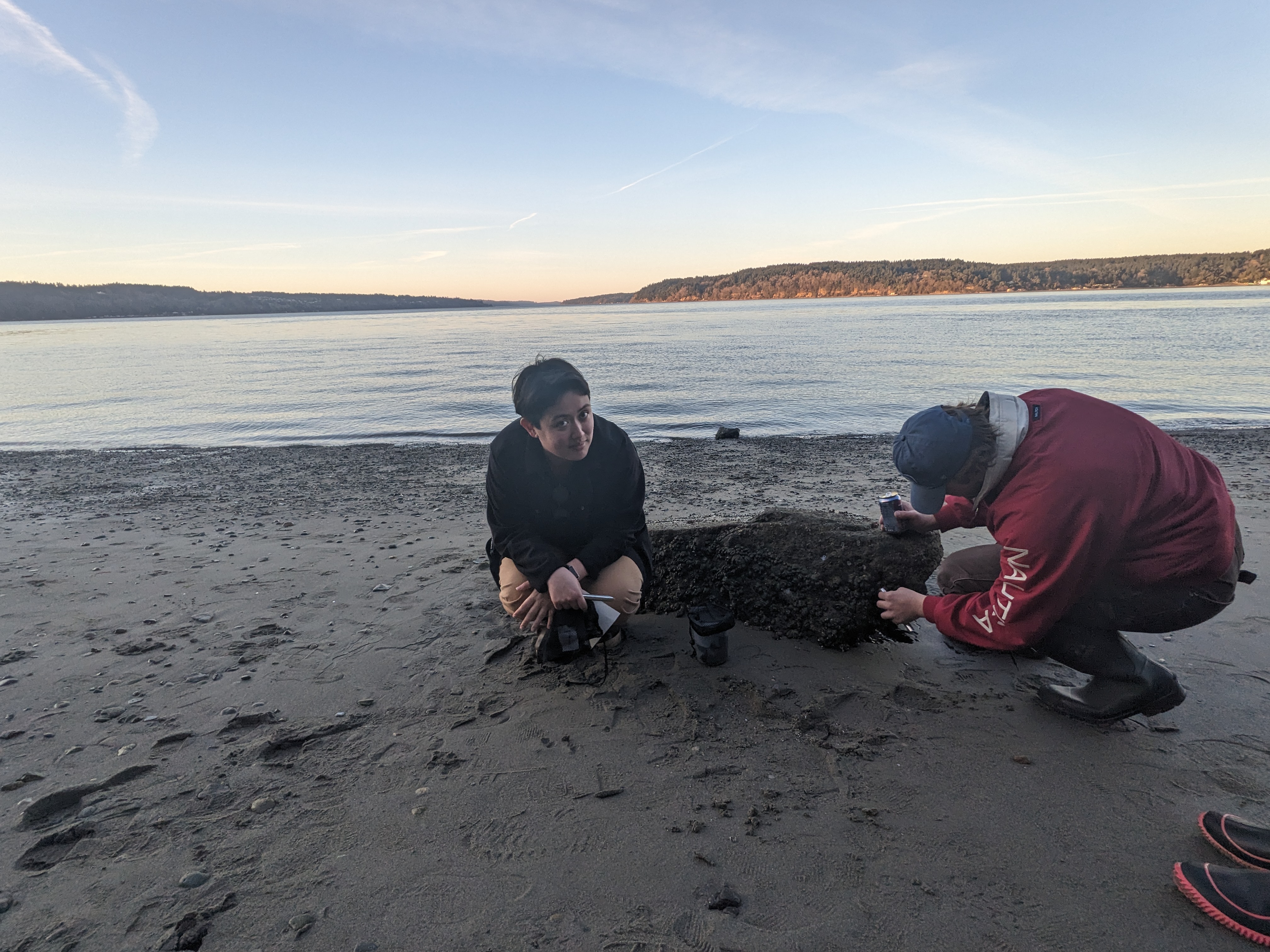
3.6 6
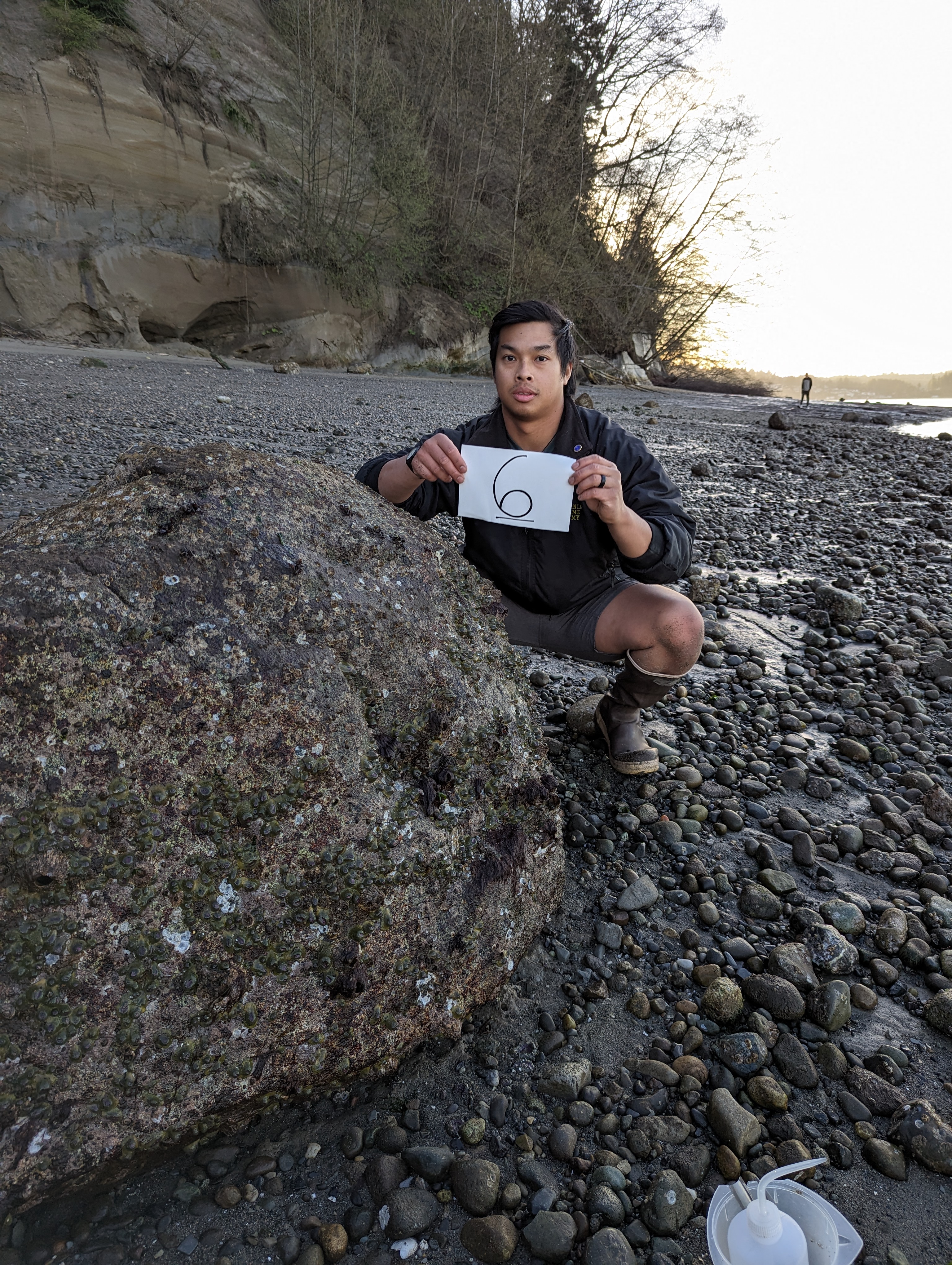
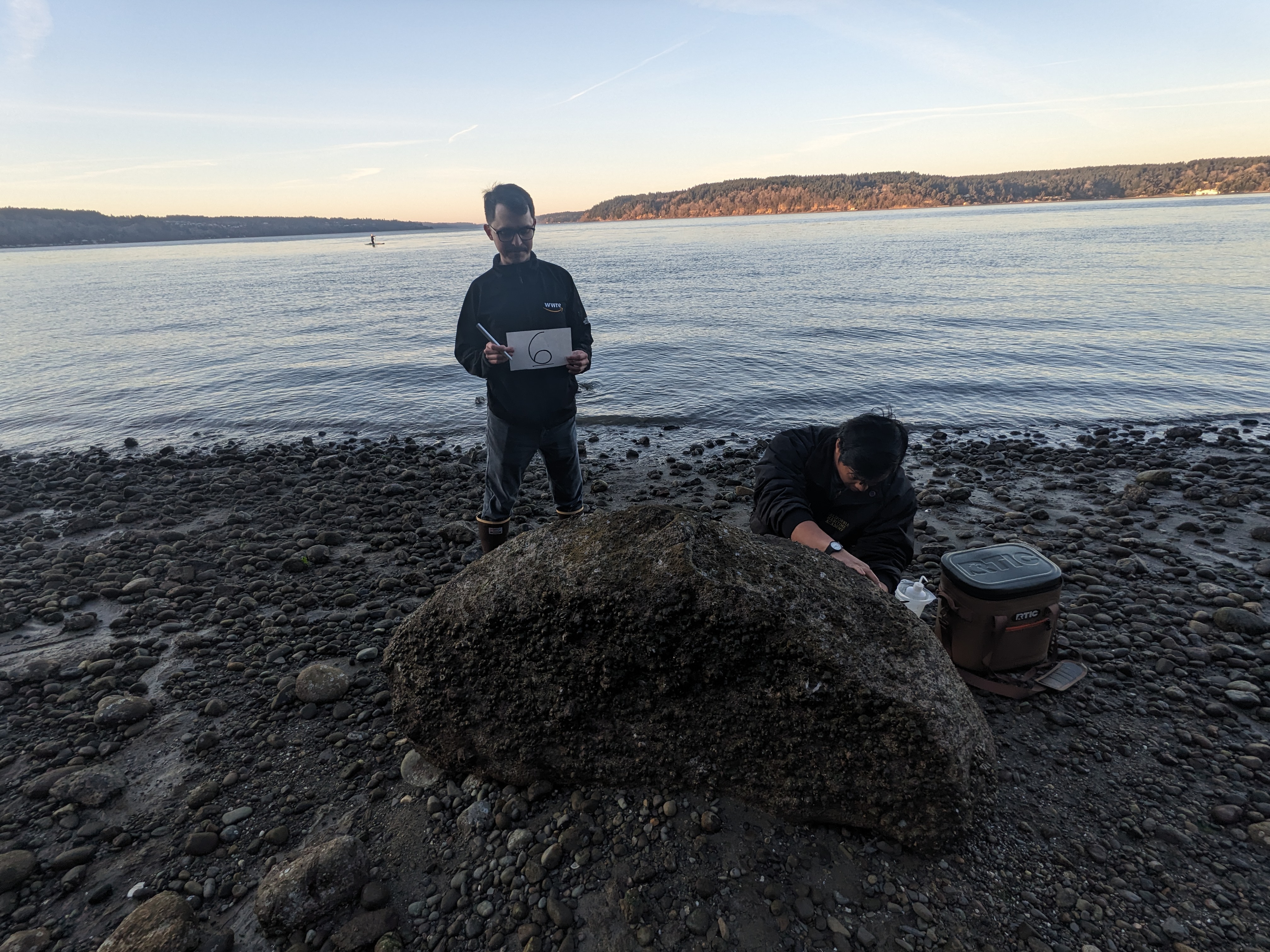
3.7 7
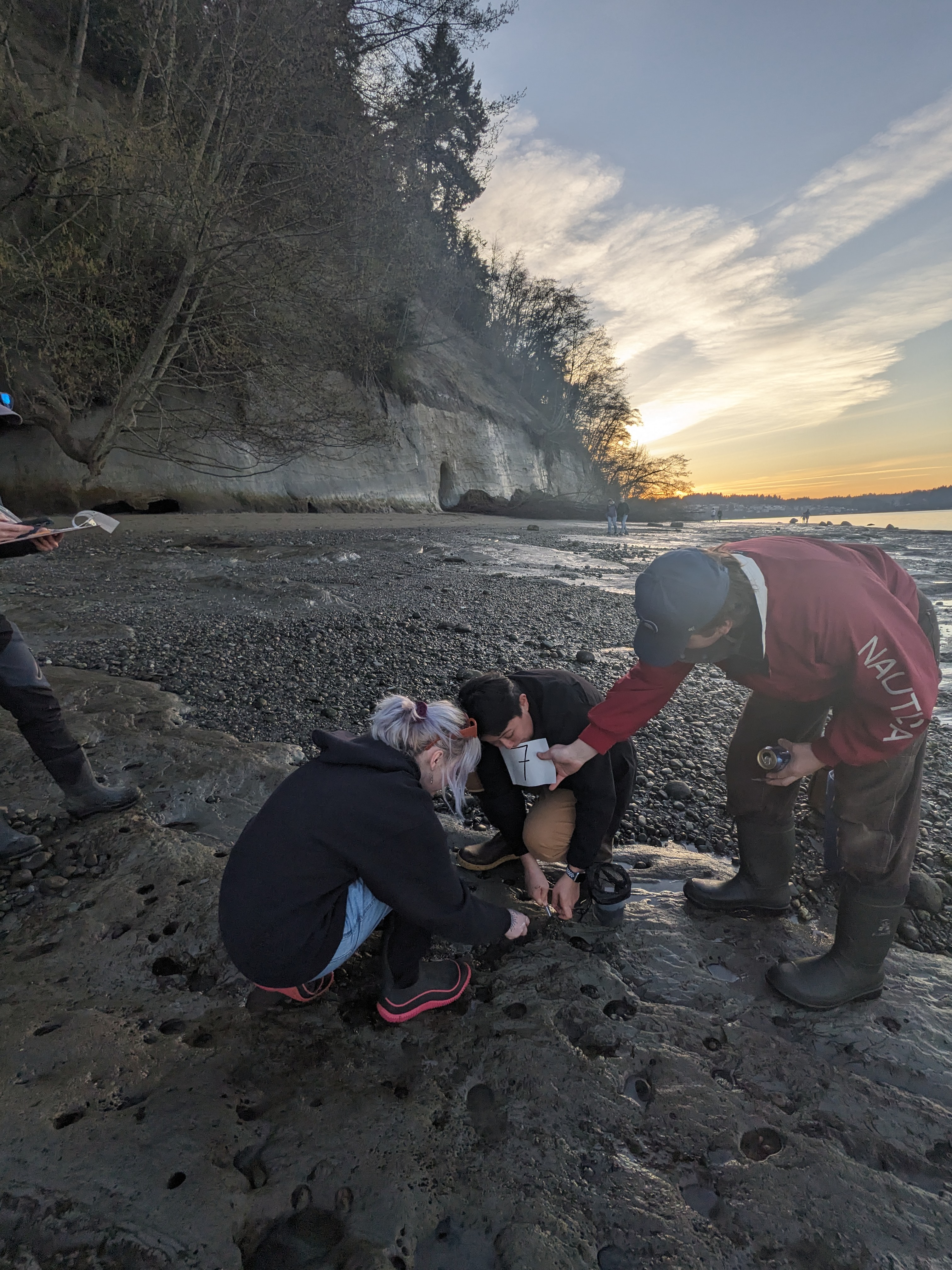
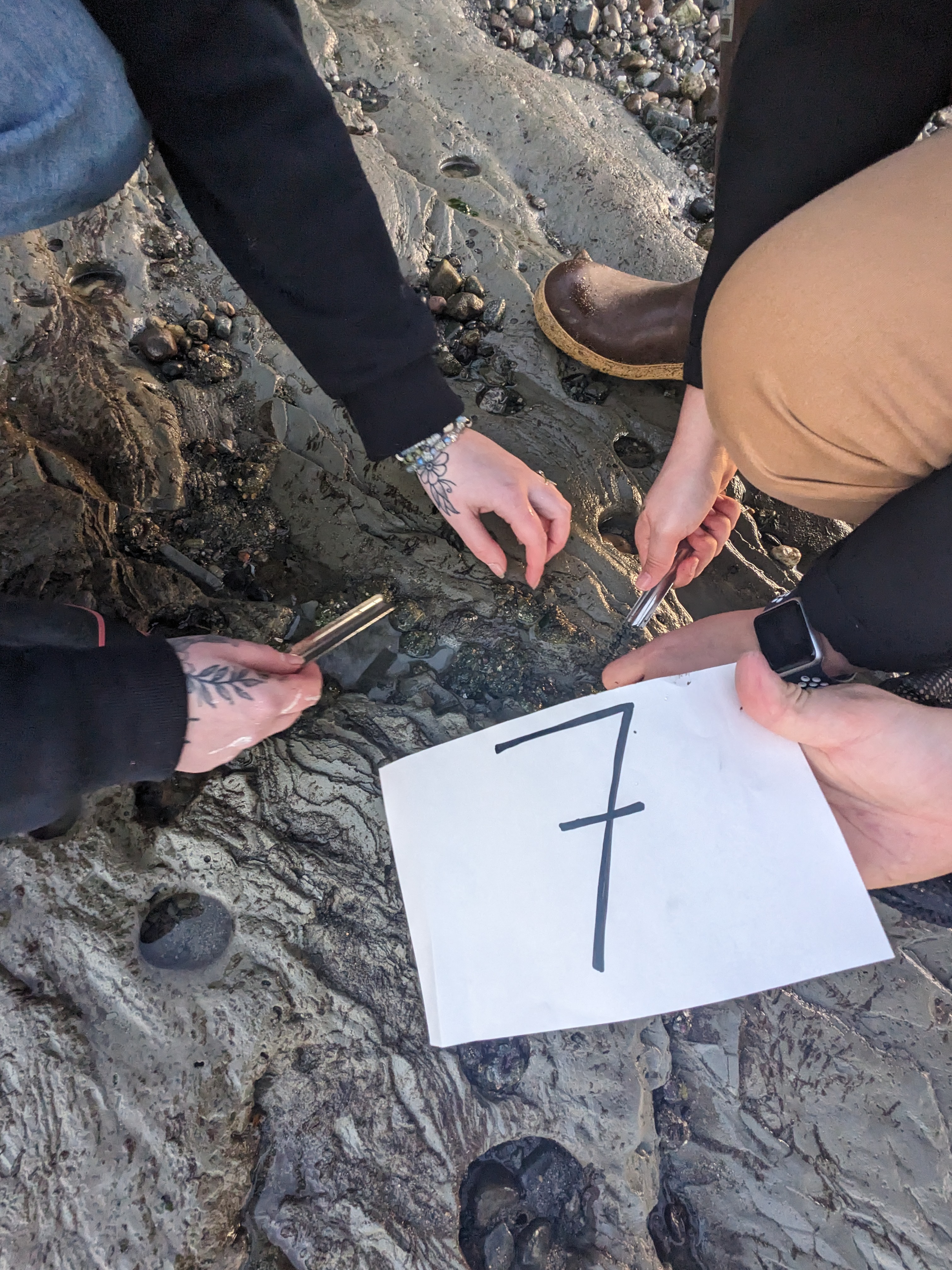
3.8 8
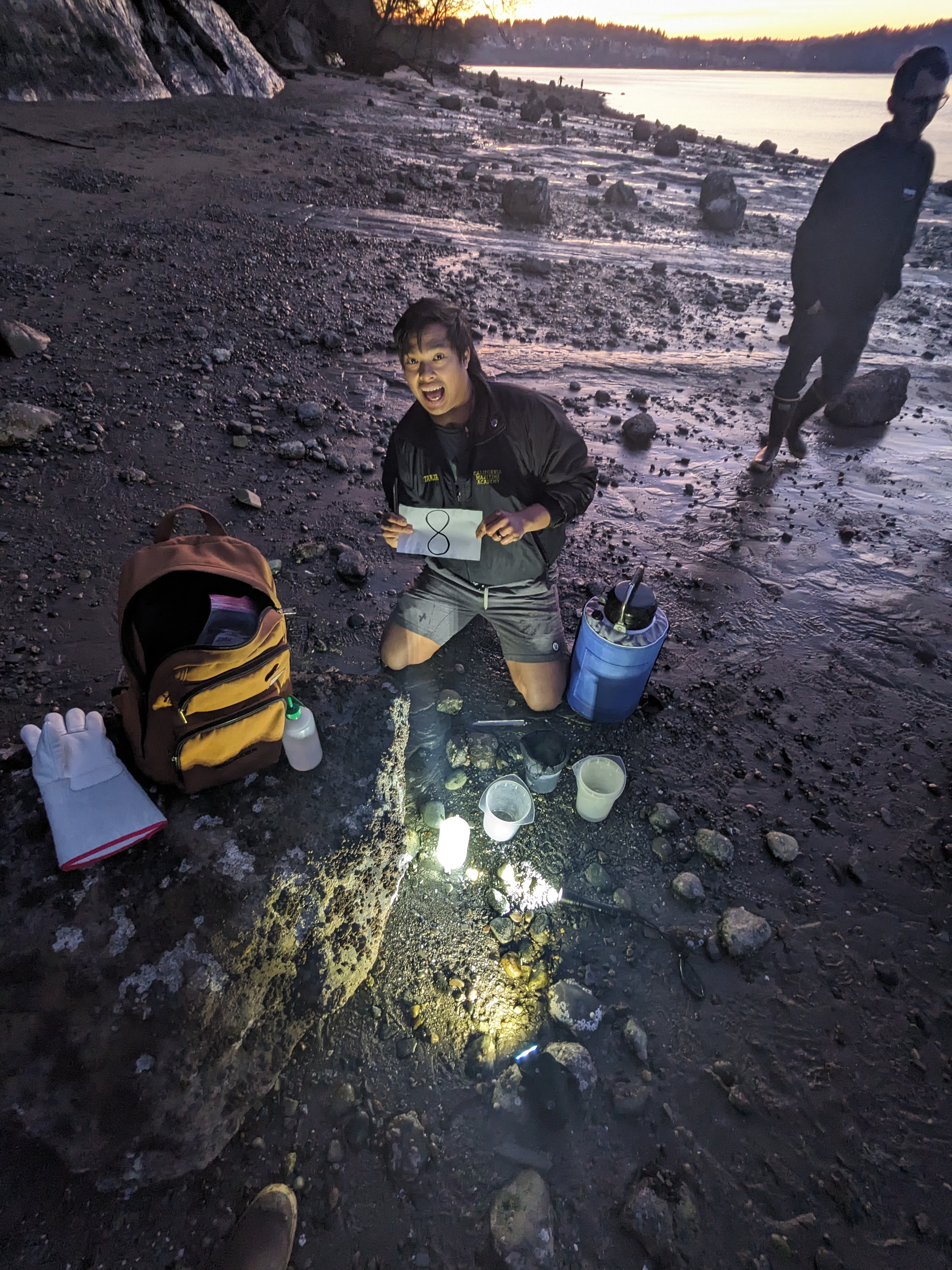
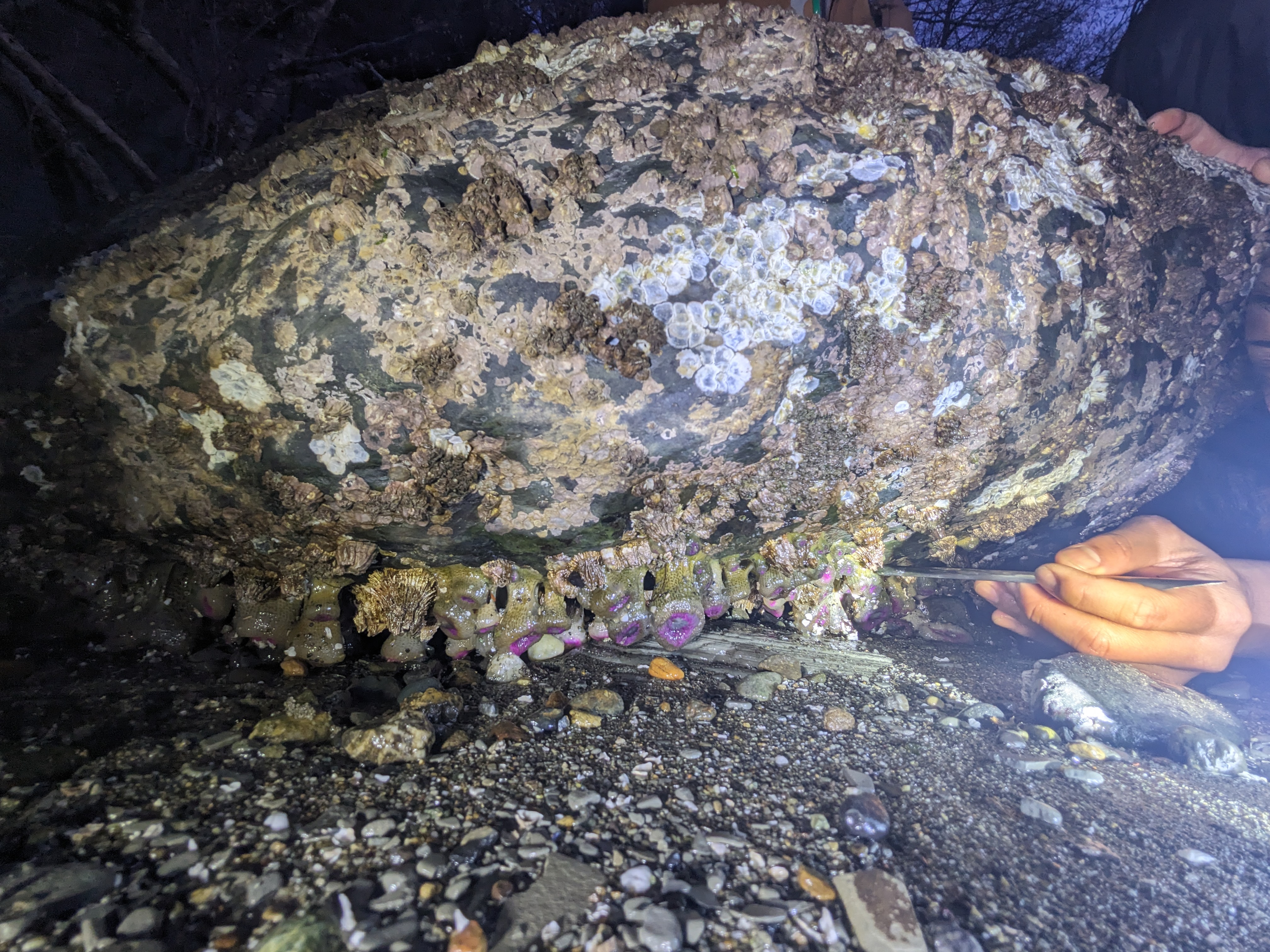
3.9 9
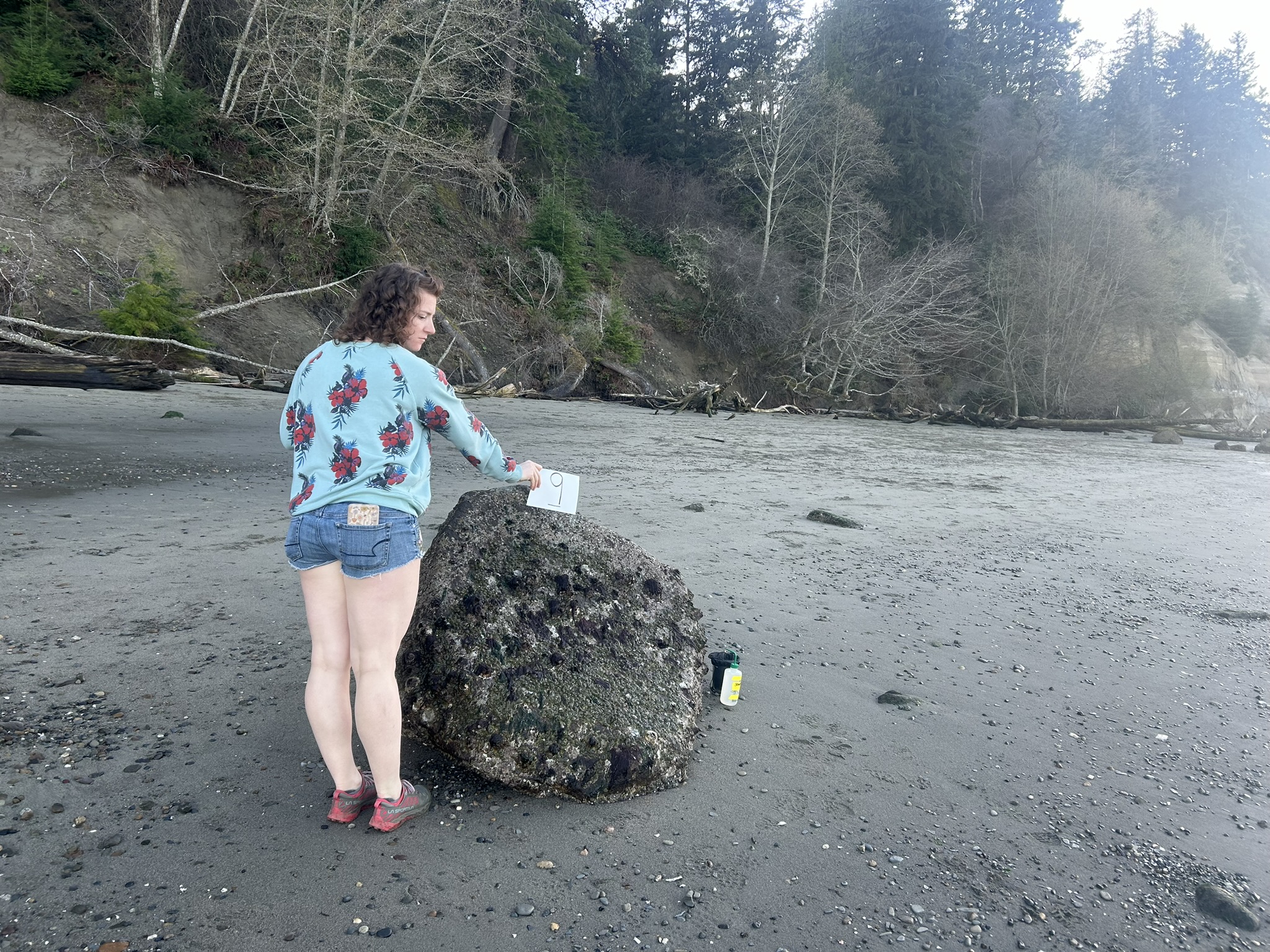
3.10 10

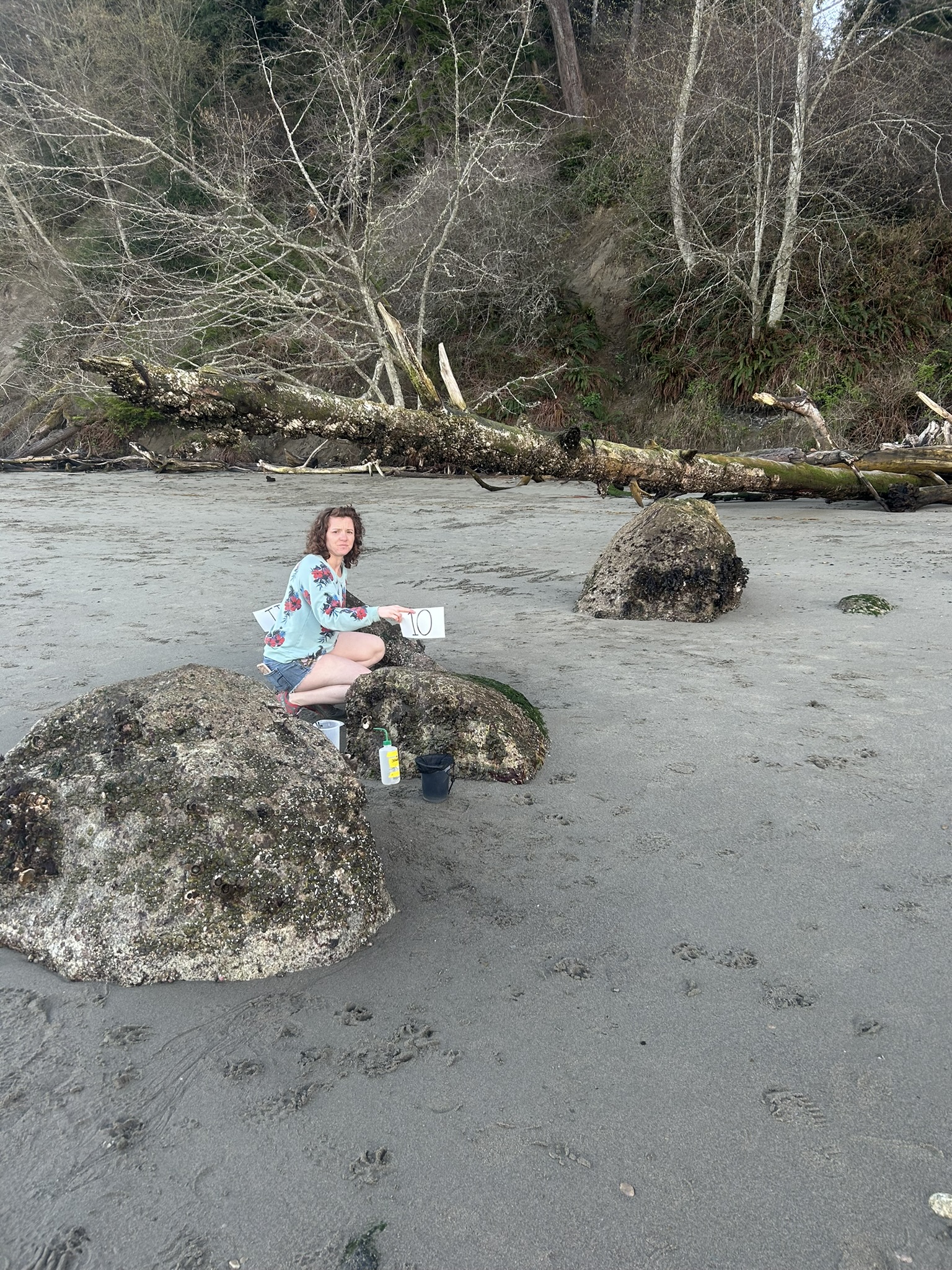
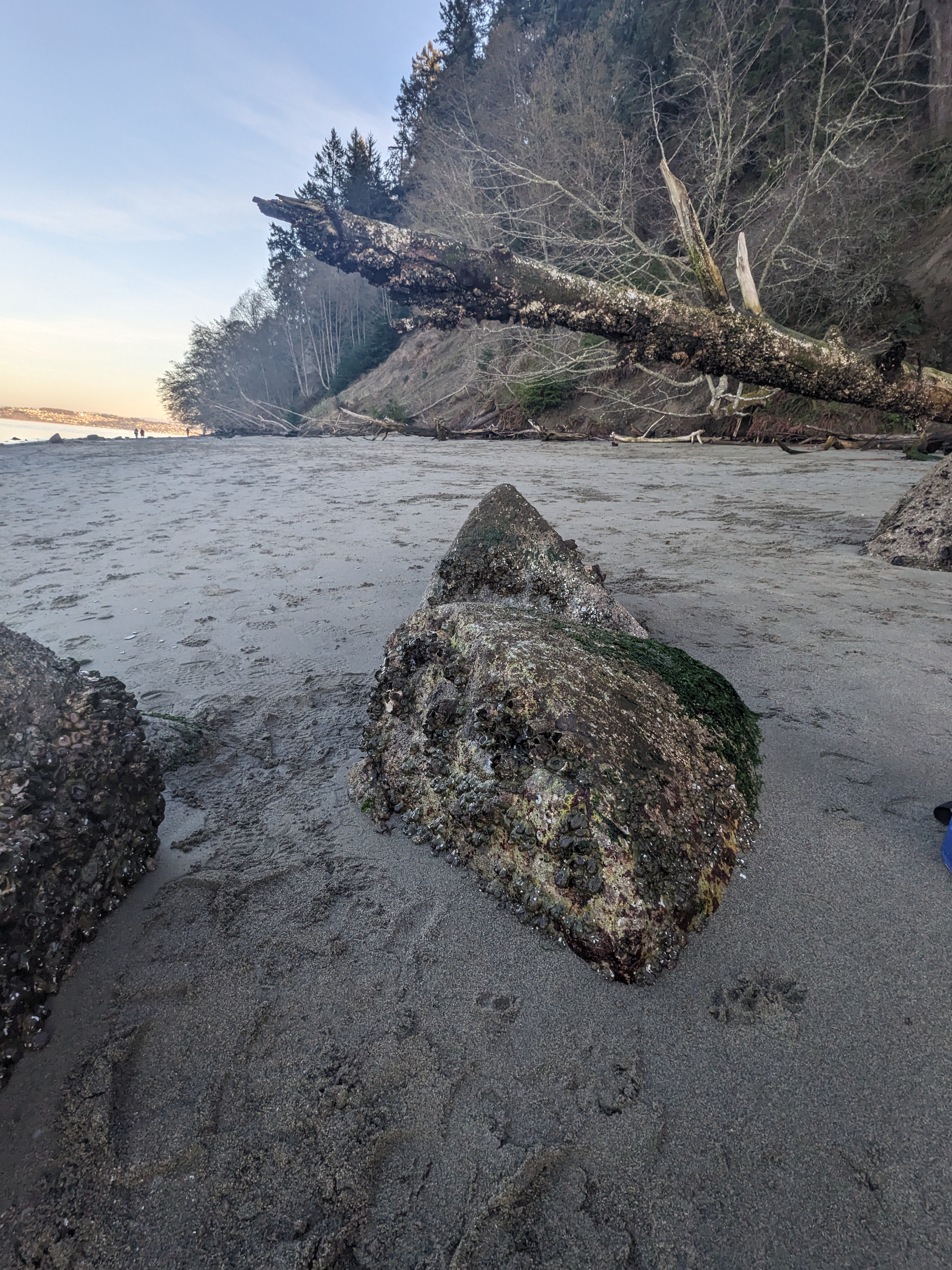
3.11 11

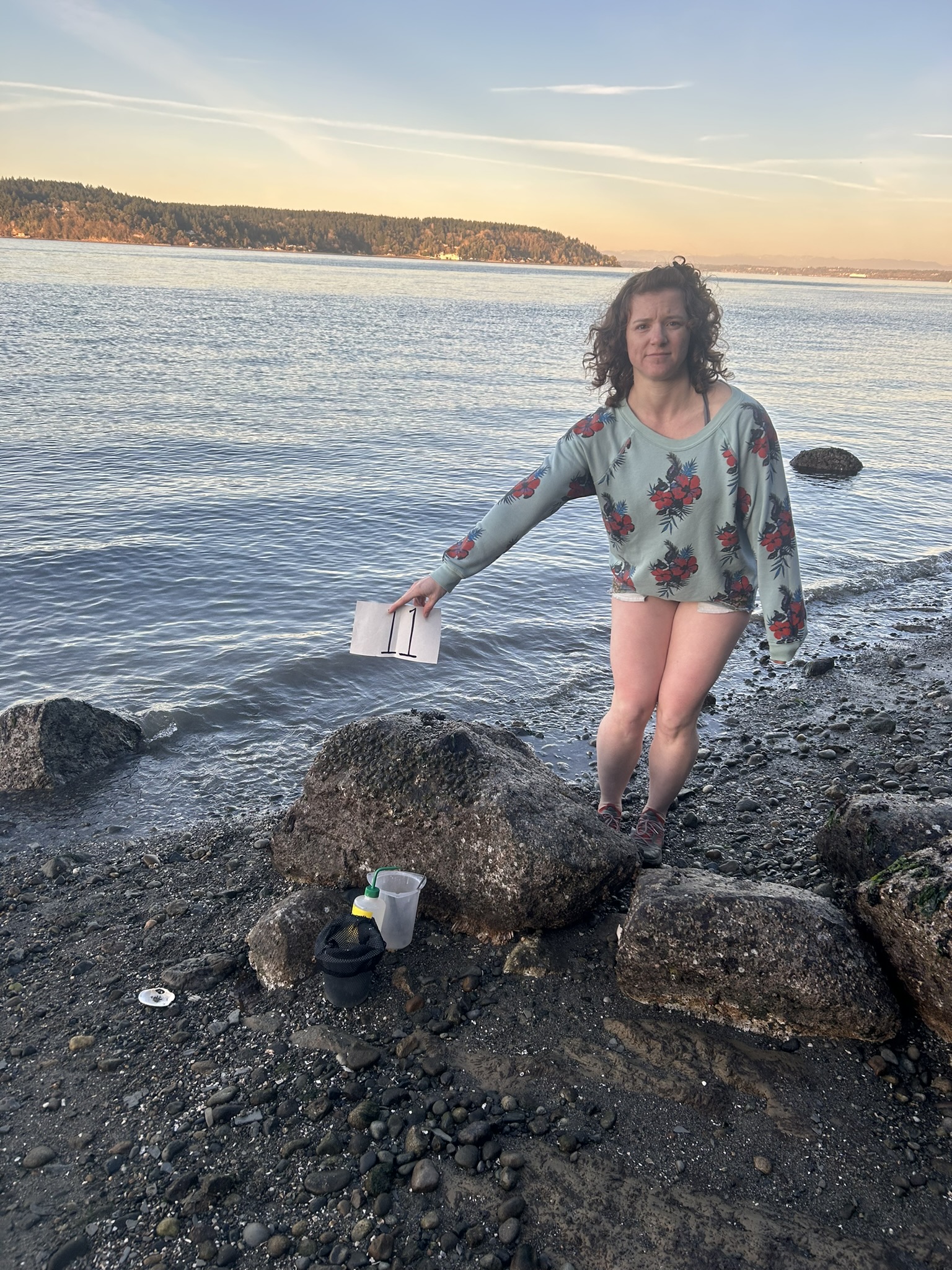
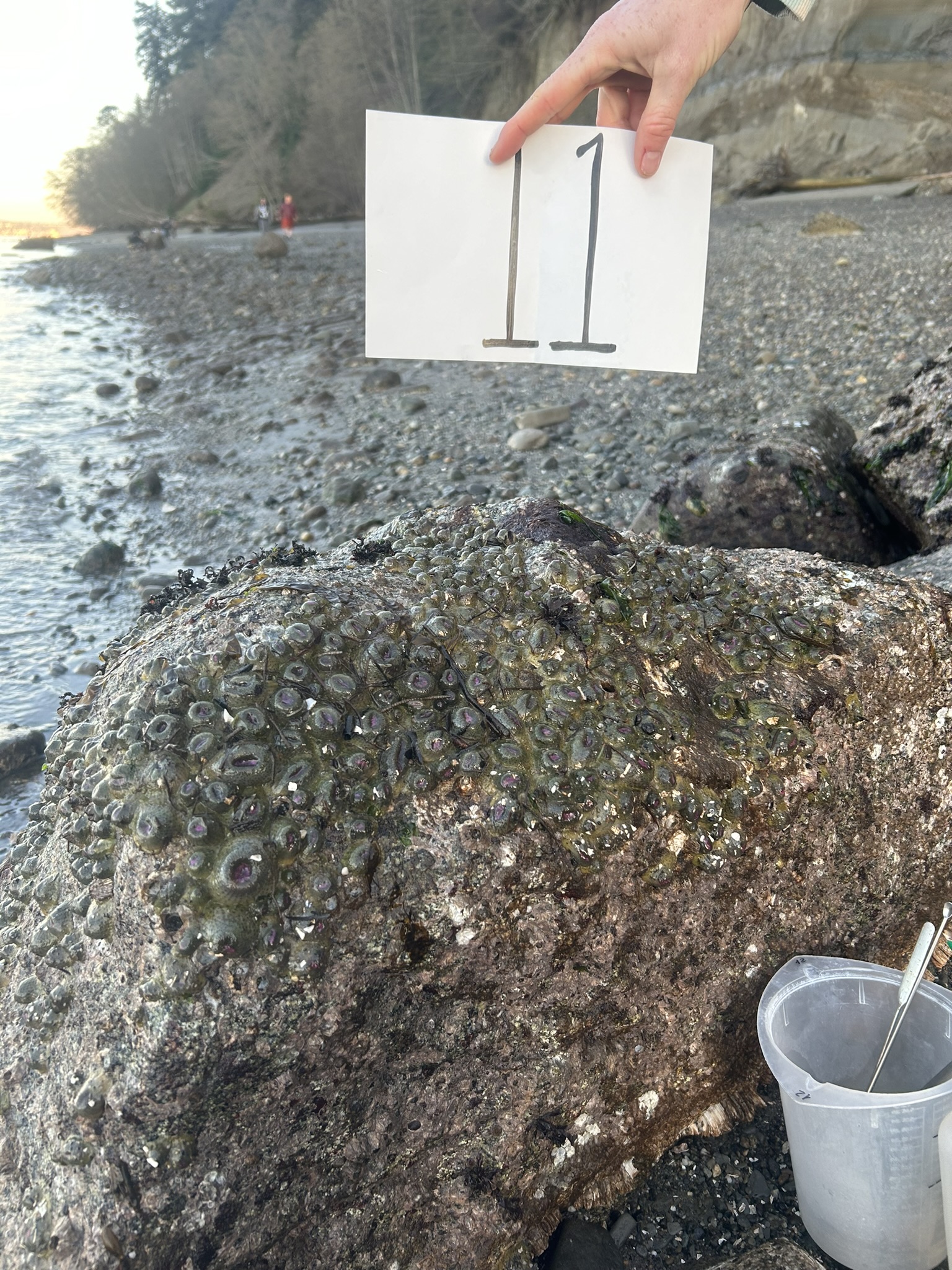
3.12 12
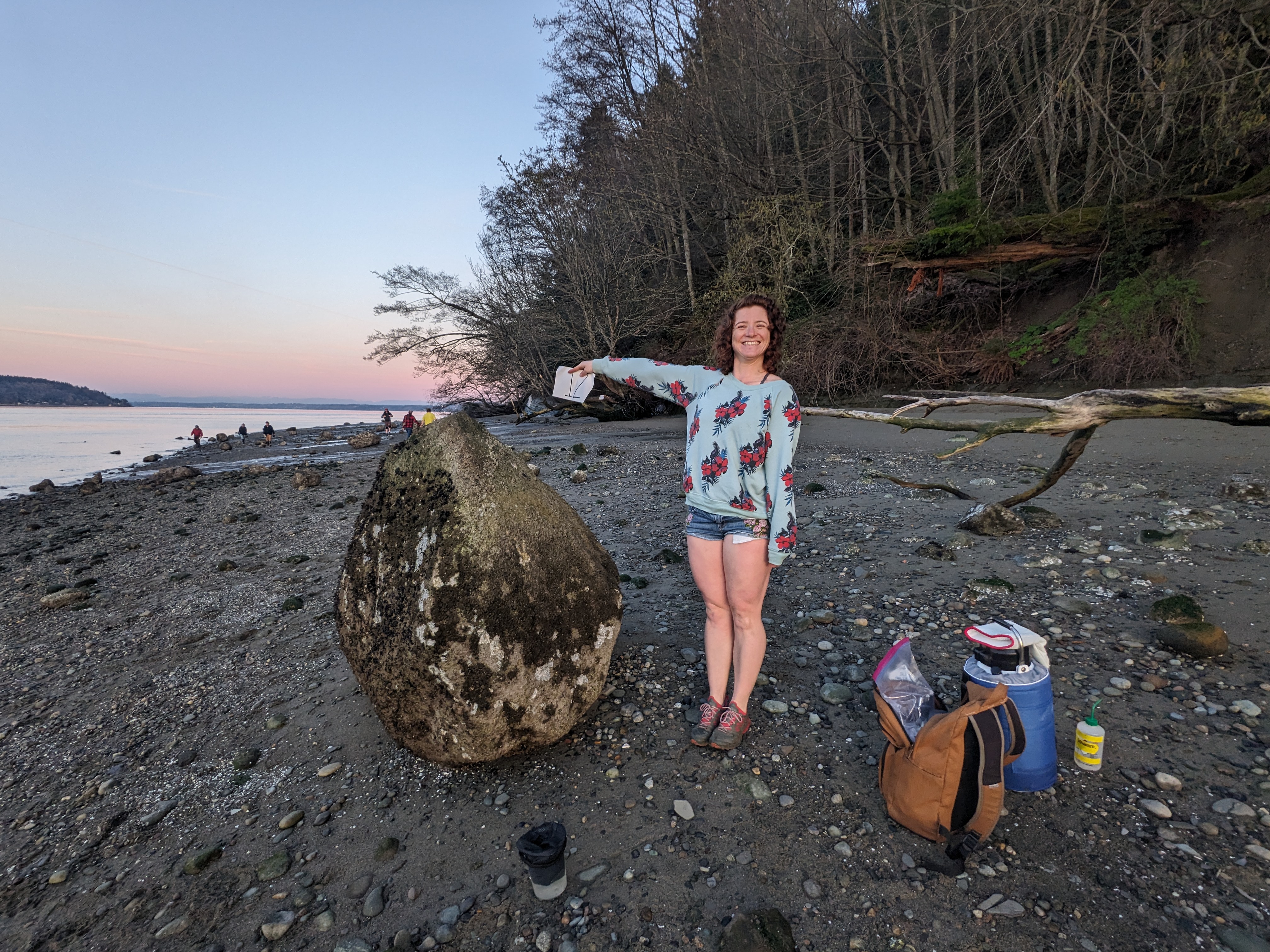

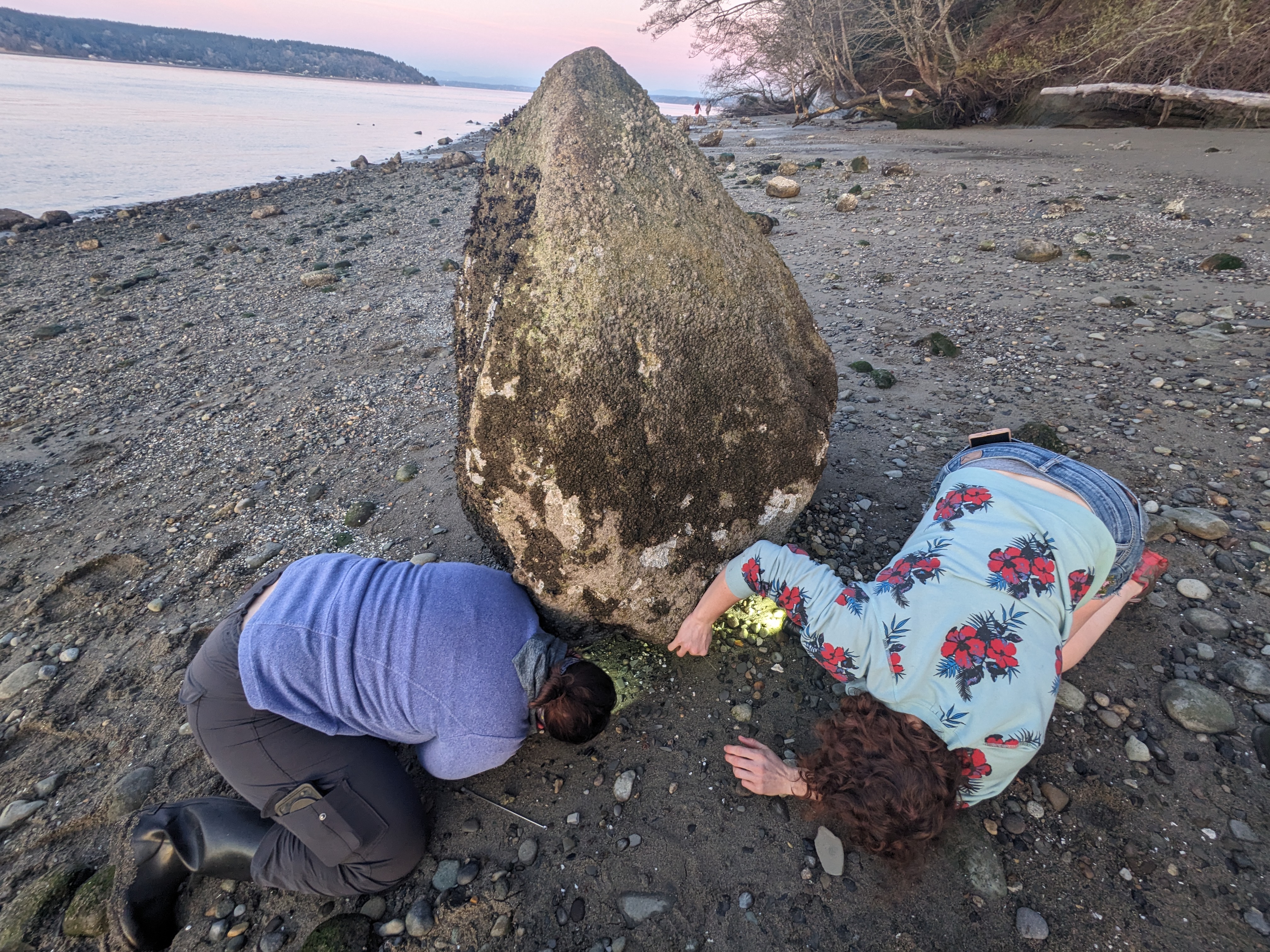
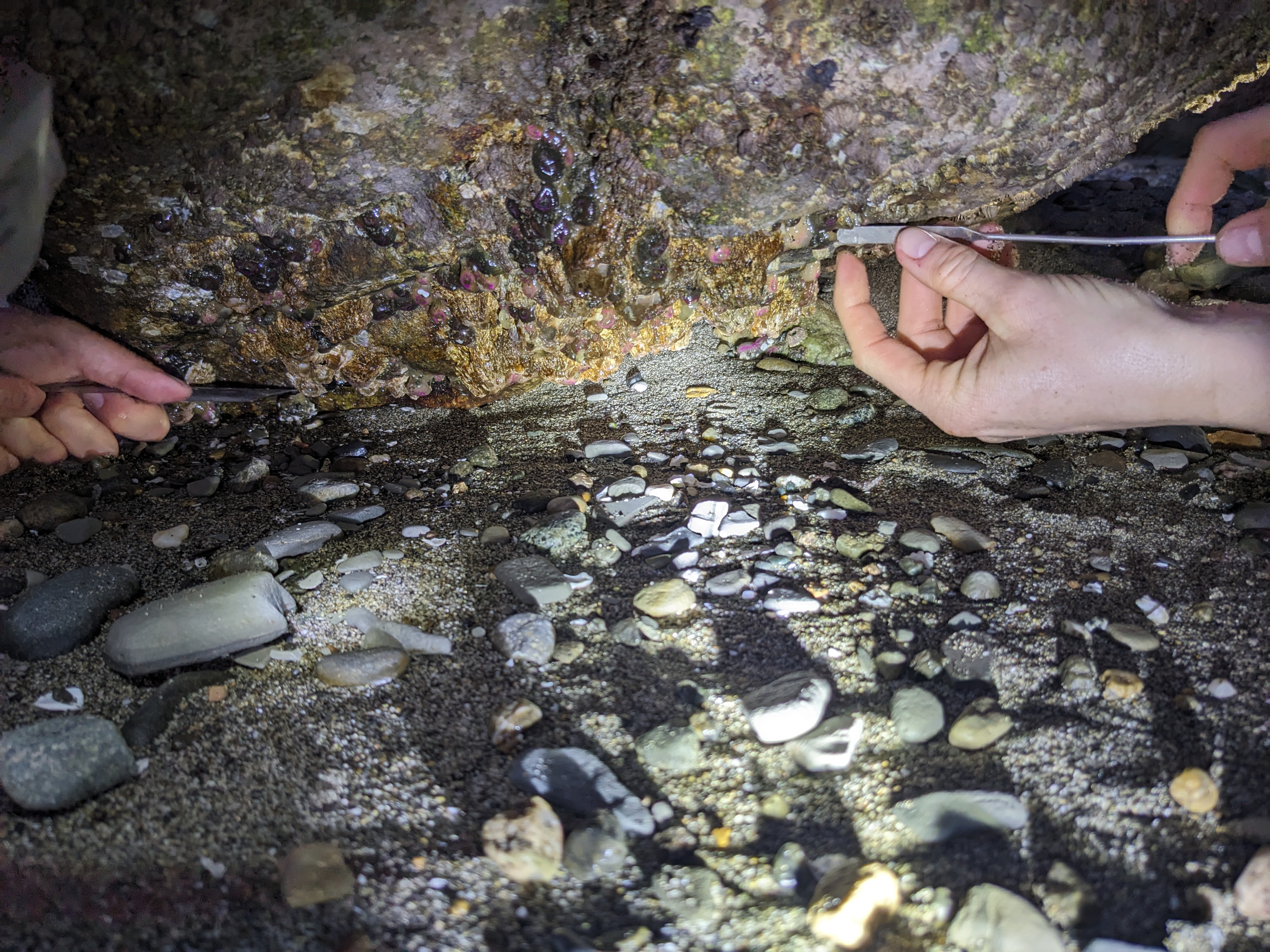
4 Takeaways
- Include your friends in field work, science is for everybody!
- Anthopleura elegantissima like wet shade, look for them at low tide, shaded parts of the beach, and under rocks and boulders.
- We found them to be most abundant on the northern beach of Point Defiance
- The metal scoopulas were the best tool for separating their pedal disc from substrate without causing any tissue tears
- It was easier to remove the anemones from rock than from clay (see aggregate no. 7…)
- All anemones are expected to be hosting the brown algae Breviolium muscatinei, since they are golden-brown in hue and were found in places that are often exposed to light (despite afternoon sun shading)
- Two of the anemones collected from deeply-shaded undercuts may be
aposymbiotic, at least in appearance they are mostly white with pink tips - The aggregates at Owens Beach are densest between aggregate 4 and 10 (and in fact a line of boulders perpindicular to the water between these aggregates are all covered in anemones!)
Why do we speculate we found them where we did, and not on the tip or south-facing sides of the point? I think because the north-facing beach is protected from the hot afternoon sun. In Washington summers, the hottest part of the day is usually around ~5PM, where we found the anemones, they would be shaded by the sandstone and clay bluff of Point Defiance in the hot summer evenings.
